How to Solve Sudoku Puzzles – Real Tips and Advice (Part 4)
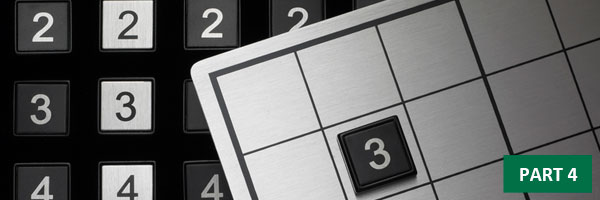
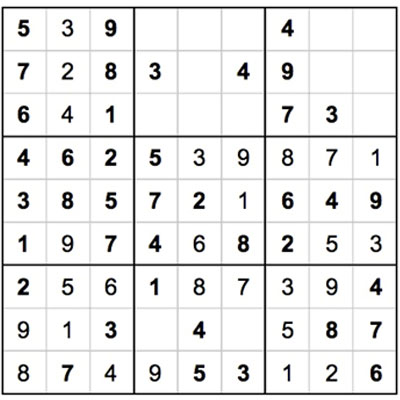
Now we need to look for some ways to fill in some more blanks, based on the knowledge that we now have. Every time we complete a square, a row, or a column, it changes our understanding of the game – each number makes it possible to successfully place the next number. Sudoku is all about momentum.
Let’s see how we can keep the momentum going. In the top row of squares, there is a row that has 6 of 9 numbers placed – the 2nd row from the top of the grid. The only numbers left to be placed are 1, 5 and 6. We can see 6s in two spots – eliminating those spots from being able to place the 6, and showing us where the 6 should go. There is a 6 in the center square (center column, bottom row) and a 6 in the farthest right column (lower right square of the grid). That means those spaces cannot contain 6s, so the 6 can only go in the upper right square, middle space.
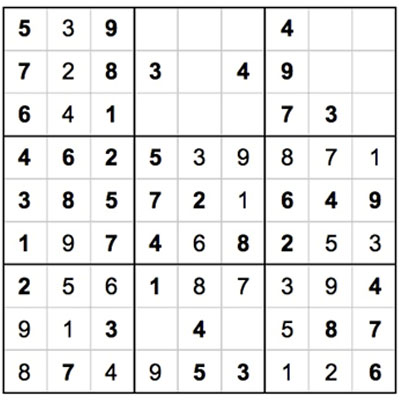
Now this row has only two numbers left to place: 1 and 5.
There is a number 5 already placed in the bottom middle square, middle column, so that means we can place a 1 in the center space of the top center square, and we can place 5 in the middle row of the upper right square.
The rest of the Sudoku puzzle can be solved fairly quickly from here. Let’s start by tying up some loose ends.
In the upper right square, the middle column has only one number left to place: 1. So after placing the 1, here is what we’re left with:
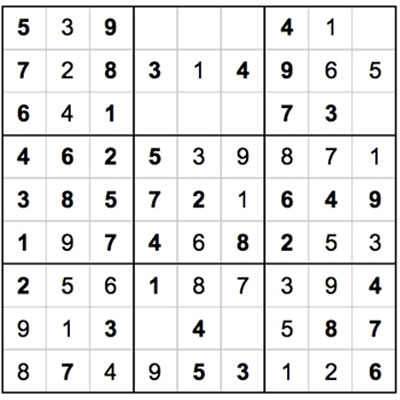
Look for More “Low Hanging Fruit”
The upper right square is almost done, but we can’t solve it yet – the 2 and 8 still need to be placed, but based on neighboring squares, we don’t know where to place those numbers yet.
So let’s look for another row or column that has only a few spaces left to fill. In the top middle square, the center column has only 2 spaces left – the only numbers left to be placed are 7 and 9. We know how to solve this column now, because we can see a 9 (in the top row, upper left square) and a 7 (top right square, bottom row). So we can place the 7 in the top row, and the 9 in the bottom row of the top center square.
Now the top center square is almost done – we still need to place 2, 5, 6 and 8.
Looking to neighboring squares, we can see a 5 in the top row (upper left square) and left column (middle square of the grid).
This means there is only one space left to place a 5 in the top center square – in the lower right corner of the square.
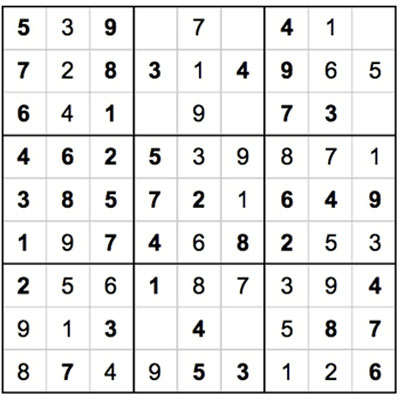
What if You Get Stuck?
At this point, there are only 7 spaces left to fill. But unfortunately, we cannot fill them because the same few numbers are tripping us up.
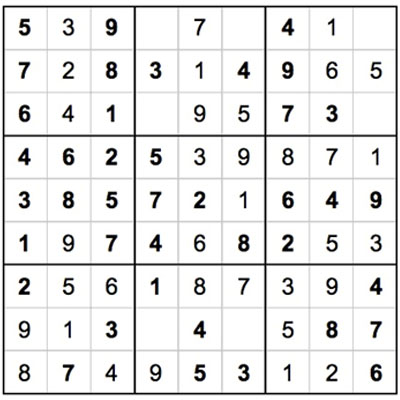
For example, in the upper right corner, we need to place 2 and 8 – but we can’t logically place those numbers based on the clues from neighboring squares. In the upper middle square, we need to place 2, 6 and 8 – and again, we don’t know where to put any of them because those are the same numbers that are missing from the neighboring square. The bottom center square is also missing numbers 2 and 6. It seems like we’re not going to be able to solve the puzzle…unless we use a special tool from Sudoku.com – the “Check Solution” tool.
If we try to put a number in a place, we can then click “Check Solution” to see if it is right. For example, if we place a 2 in the top right square, lower right corner, and then click “Check Solution,” it shows an orange color – which means that 2 is not the right number for that place.
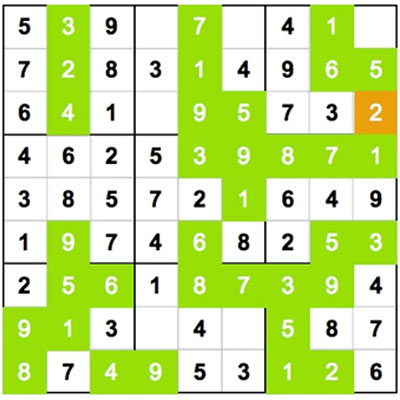
This means we can place the 2 in the one remaining spot in this row – the lower left corner of the top middle square.
And placing the two in that spot means that we can place the 8 in the spot where we formerly tried to place the 2 – so now that entire row is complete, and when we click “Check Solution,” all of the numbers are green – meaning that the solution is correct.
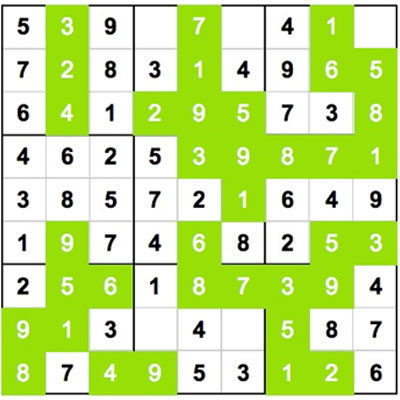
Tying Up Loose Ends
Knowing what we know now, we can complete the rest of the puzzle. The far right column (upper right corner of the upper right square) can be filled with a 2 since that is the one remaining number waiting to be placed in that column/square.
The bottom middle square still needs a 2 and a 6 – we know where to put the 2 because we already placed a 2 in the top center square (left column). And the 6 can be placed in the remaining space in the bottom center square.
Now there are only 2 spaces left to fill, in the top center square. Just by counting the numbers that have already been placed, we can quickly discover that those numbers should be 8 (in the upper left corner of the top center square) and 6 (upper right corner of the top center square).
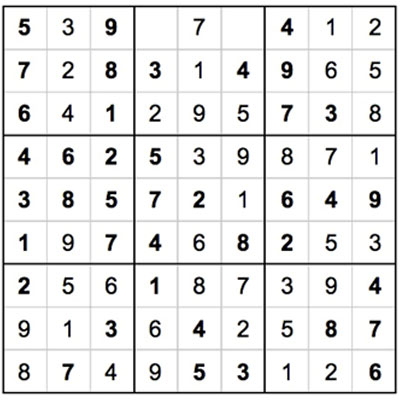
After plugging in those numbers, the puzzle is solved!
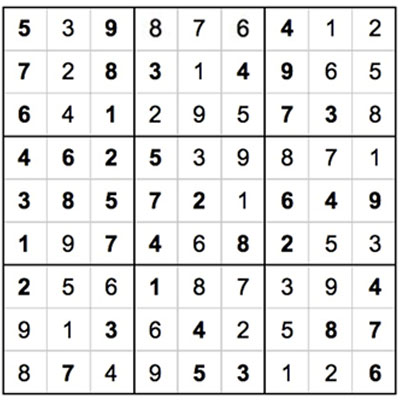
This puzzle ended up having a few surprising complexities – without being able to use the “Check Solution” tool from Sudoku.com, it might not have been possible to solve it.
But hopefully these articles will be helpful in showing some real strategies for solving Sudoku puzzles, step by step.
Whether you’re a beginner or a Sudoku expert, there is always something new to learn from solving these seemingly simple but infinitely complex number puzzles.